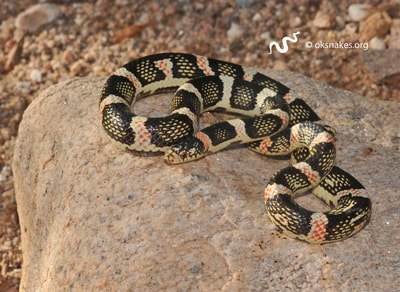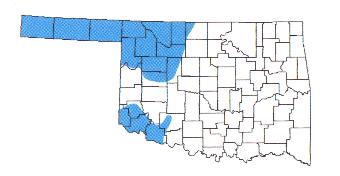Long-nosed snake
Rhinocheilus lecontei
Rhinocheilus lecontei
HARMLESS
Description:
This tri-colored snake is red, black, and white. It has a black head and a red snout that is slightly longer than the lower jaw. The belly is yellow or white and has some dark blotches. It has smooth scales and its anal plate is single.
Size:
Adults 20 - 36 inches (51 - 91 cm)
Prey:
Lizards and their eggs, snakes, and rodents
Reproduction:
Mates in spring and lays 4 - 9 eggs during the summer. Eggs hatch within 2 - 3 months and hatchlings are 8 - 10 inches (20 - 25 cm) long.
Habitat:
Dry prairie and desert brushland
Other Information:
This snake is nocturnal and is an excellent burrower. When captured, its defense is to hide its head in its coils, vibrate its tail, and discharge a fluid made up of blood, musk, and feces.
Why doesn't the range map show this species in my county?
Description:
This tri-colored snake is red, black, and white. It has a black head and a red snout that is slightly longer than the lower jaw. The belly is yellow or white and has some dark blotches. It has smooth scales and its anal plate is single.
Size:
Adults 20 - 36 inches (51 - 91 cm)
Prey:
Lizards and their eggs, snakes, and rodents
Reproduction:
Mates in spring and lays 4 - 9 eggs during the summer. Eggs hatch within 2 - 3 months and hatchlings are 8 - 10 inches (20 - 25 cm) long.
Habitat:
Dry prairie and desert brushland
Other Information:
This snake is nocturnal and is an excellent burrower. When captured, its defense is to hide its head in its coils, vibrate its tail, and discharge a fluid made up of blood, musk, and feces.
Why doesn't the range map show this species in my county?

